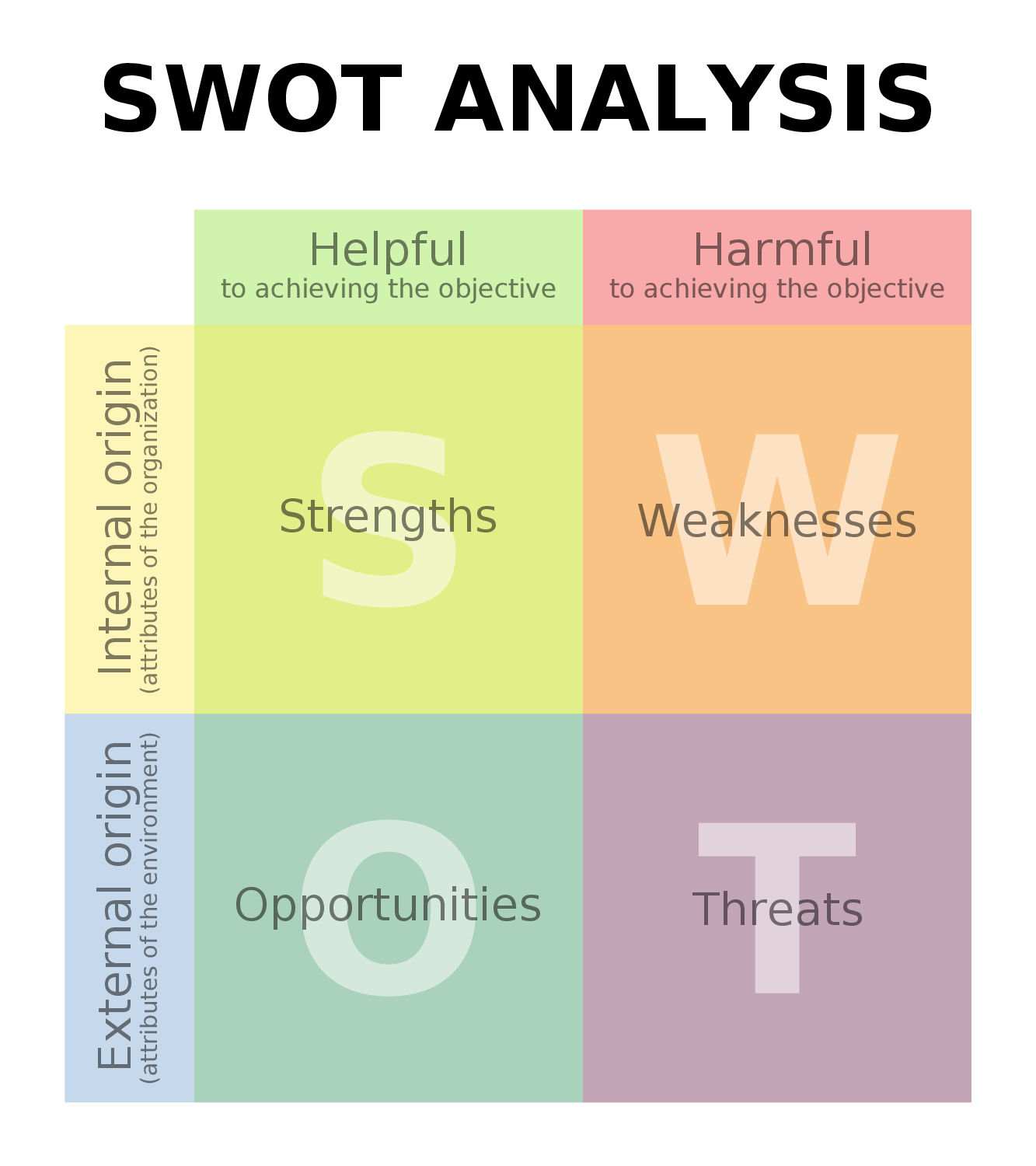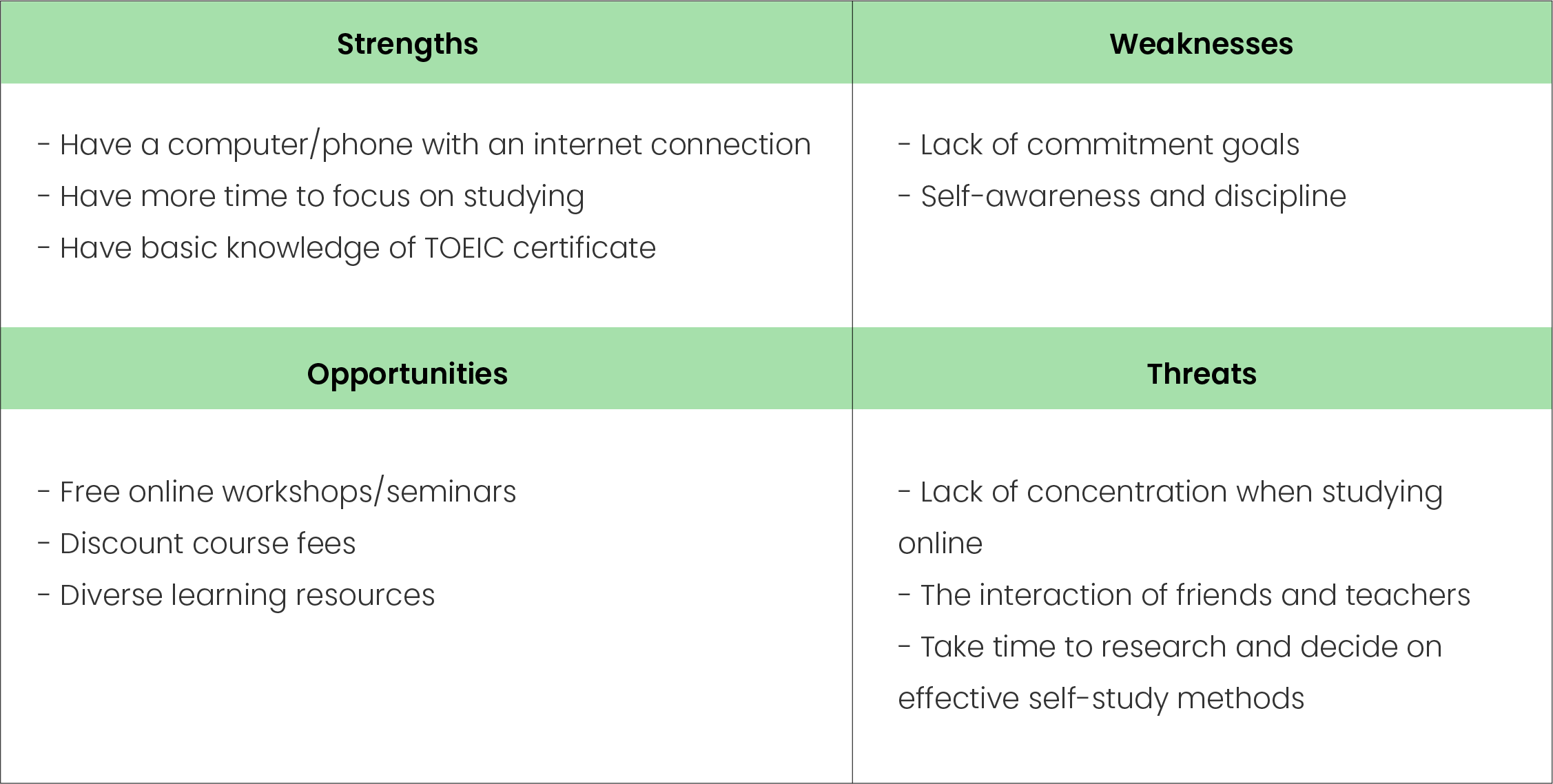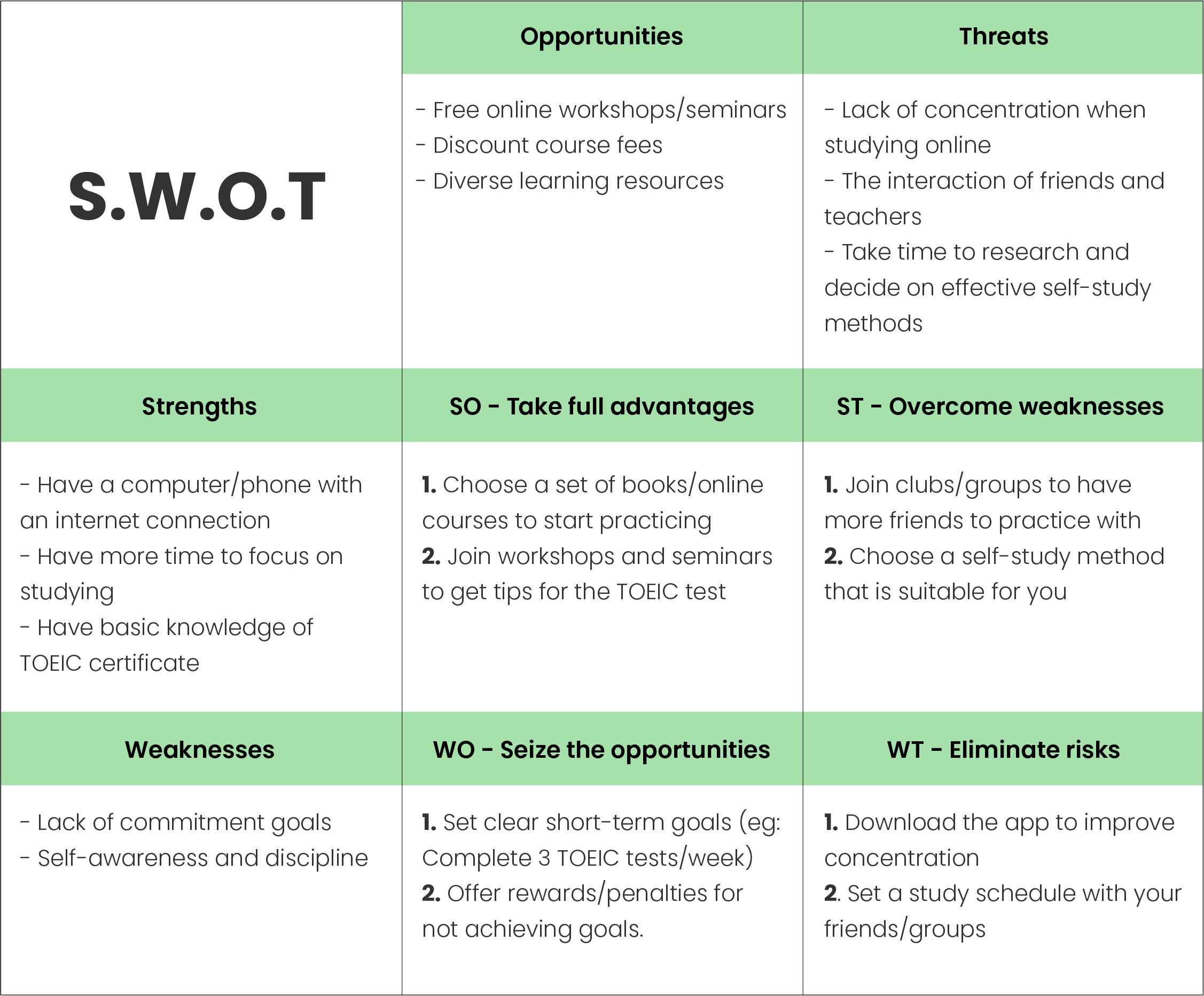Click for Vietnamese Version
SWOT is an analysis framework of Strengths, Weaknesses, Opportunities, Threats to make decisions. SWOT is often used in business organizations & economics. But in fact, SWOT can be applied to all aspects of life, even personal finance or even swiping on Tinder.
SWOT considers four main factors:
- Strengths - the internal factors that help you succeed (ability, knowledge, relationships, etc.)
- Weaknesses - internal factors that disadvantage you (lack of resources, lack of knowledge, ...)
- Opportunities - external factors that can be leveraged for success.
- Threats - external factors that endanger your success.

The traditional SWOT model is probably not too unfamiliar to most people. But applying the model to make decisions in an optimal and flexible way is not easy.
Upgrade the difficulty of the “SWOT model” with the following real-life examples! Try applying the SWOT model to build self-development. The real problem is given: How to self-study for achieving the TOEIC test with above 700 points during social distancing at home?
Step 1: What do we have? (Traditional SWOT analysis)
The traditional SWOT model is familiar with a 2x4 table.

Step 2: Think out of the box (Advanced SWOT analysis)
The SWOT model can be expanded and developed to establish a foundation for stimulating the advantages and minimize the disadvantages.
- SO (maxi-maxi): take full advantage to create opportunities.
- WO (mini-maxi): overcome weaknesses to promote strengths.
- ST (maxi-mini): use strength to eliminate risk.
- WT (mini-mini): address any negative assumptions and limit negative risks and effects.

Step 3: Get the things done (Priority Matrix)
After having full "ingredients", how to accelerate the things. The Eisenhower Matrix, also known as the Priority Matrix, is the "guideline" that helps us identify and arrange the tasks that need to be done. Basically, the Eisenhower matrix is based on two questions:
- Is this task important?
- Is this task urgent?
From there, give a rating for the work to be implemented, including 4 types in the order of priority as follows:
1. Important and Urgent (Do First)
2. Important but not urgent (Do Later)
3. Not important but urgent (Delegate)
4. Neither important nor urgent. (Eliminate)

In order not to miss out on work and important goals, we can use time management tools. Read more about time and task management tools here. And if you are "authentic" Cốc Cốc-ers, join English Pub Online every week to get the TOEIC certificate together!.
Every decision in your life will include 4 SWOT factors: choosing a job, choosing a lover, or even going shopping. Instead of making instinctive decisions, let’s try to apply the SWOT model to make strategic decisions.
REWIRE YOUR BRAIN - Don't let a new week go by without finding something new to learn. Come to “Rewire Your Brain”, where you will be constantly updated with useful knowledge with Cốc Cốc!

